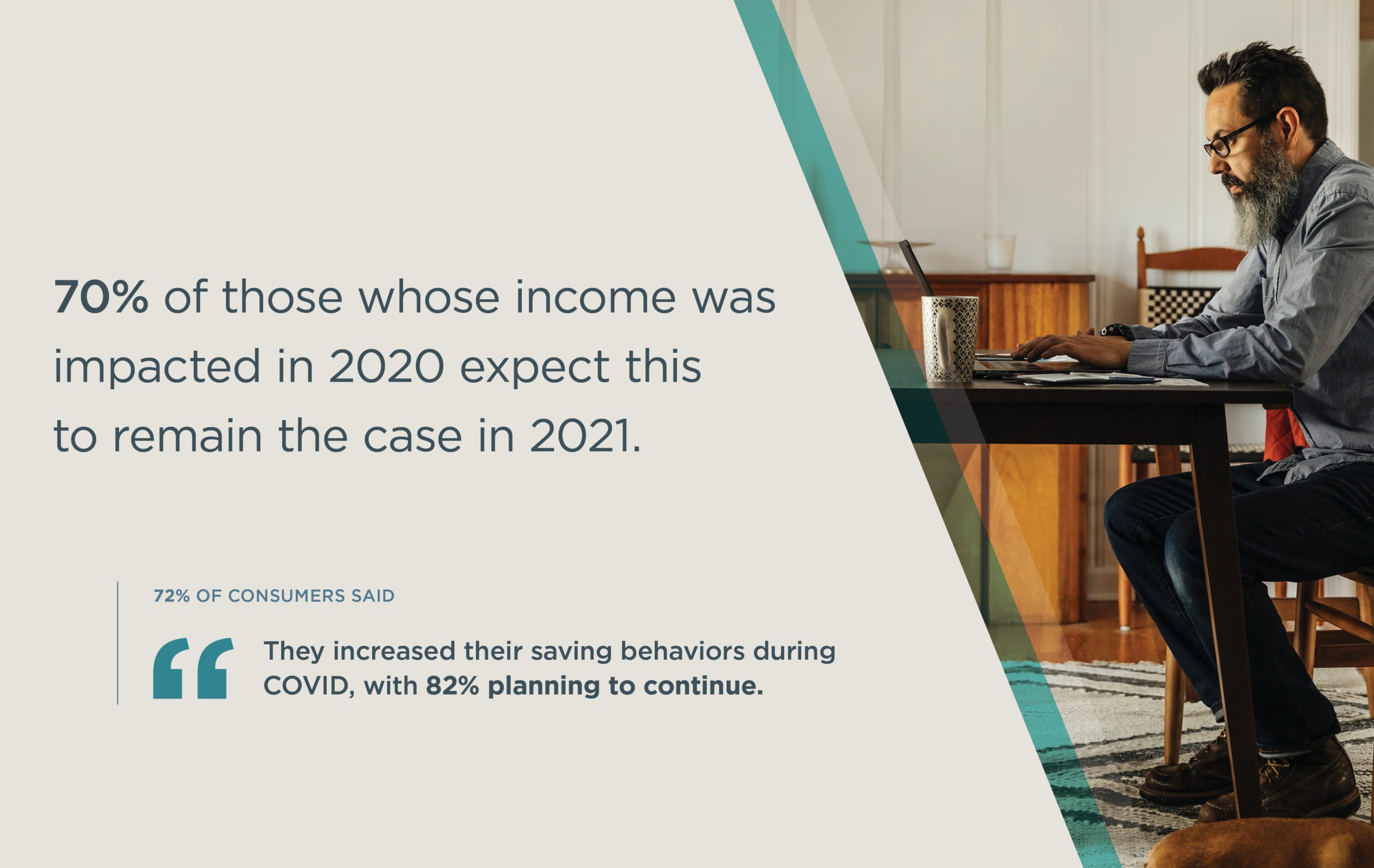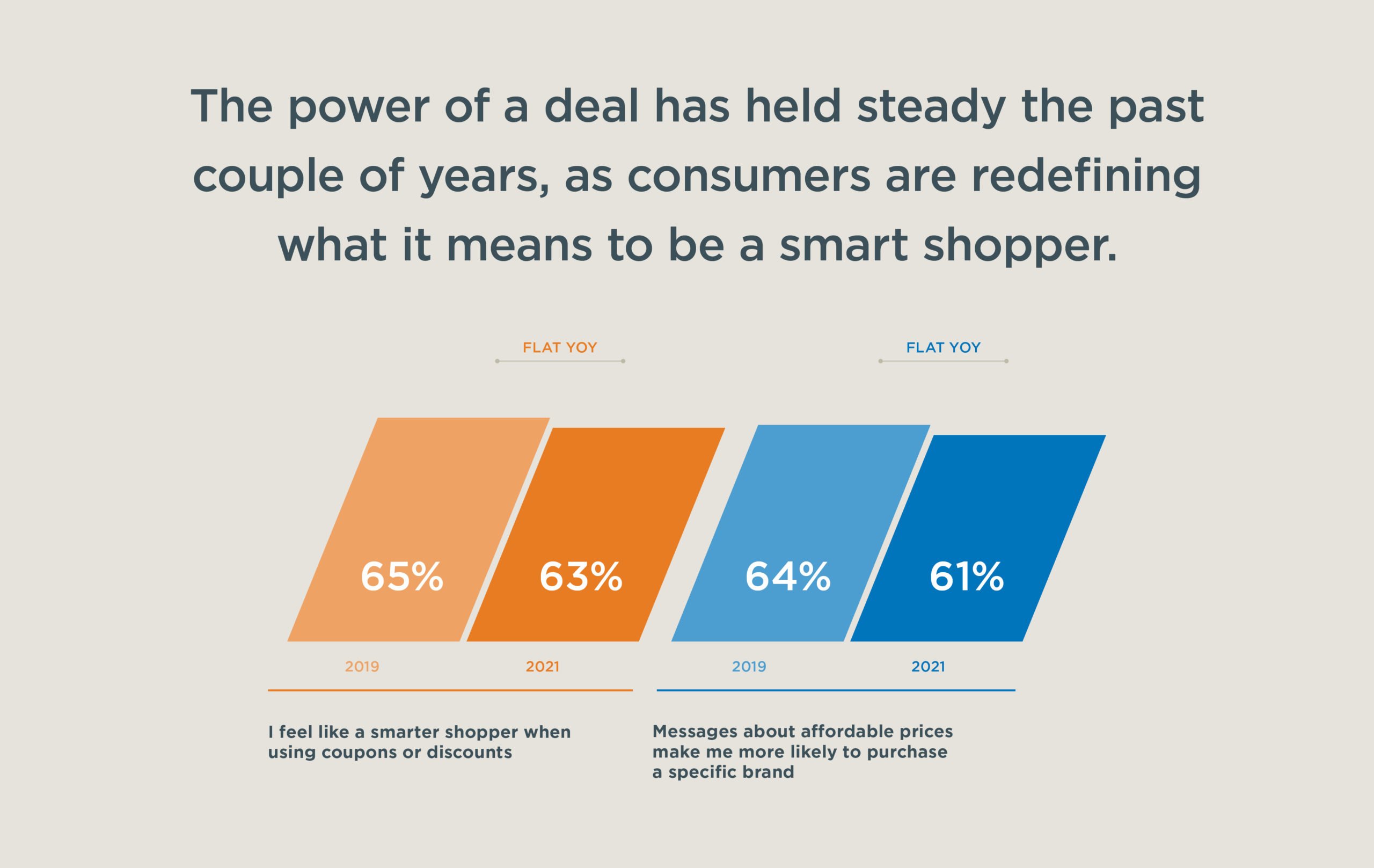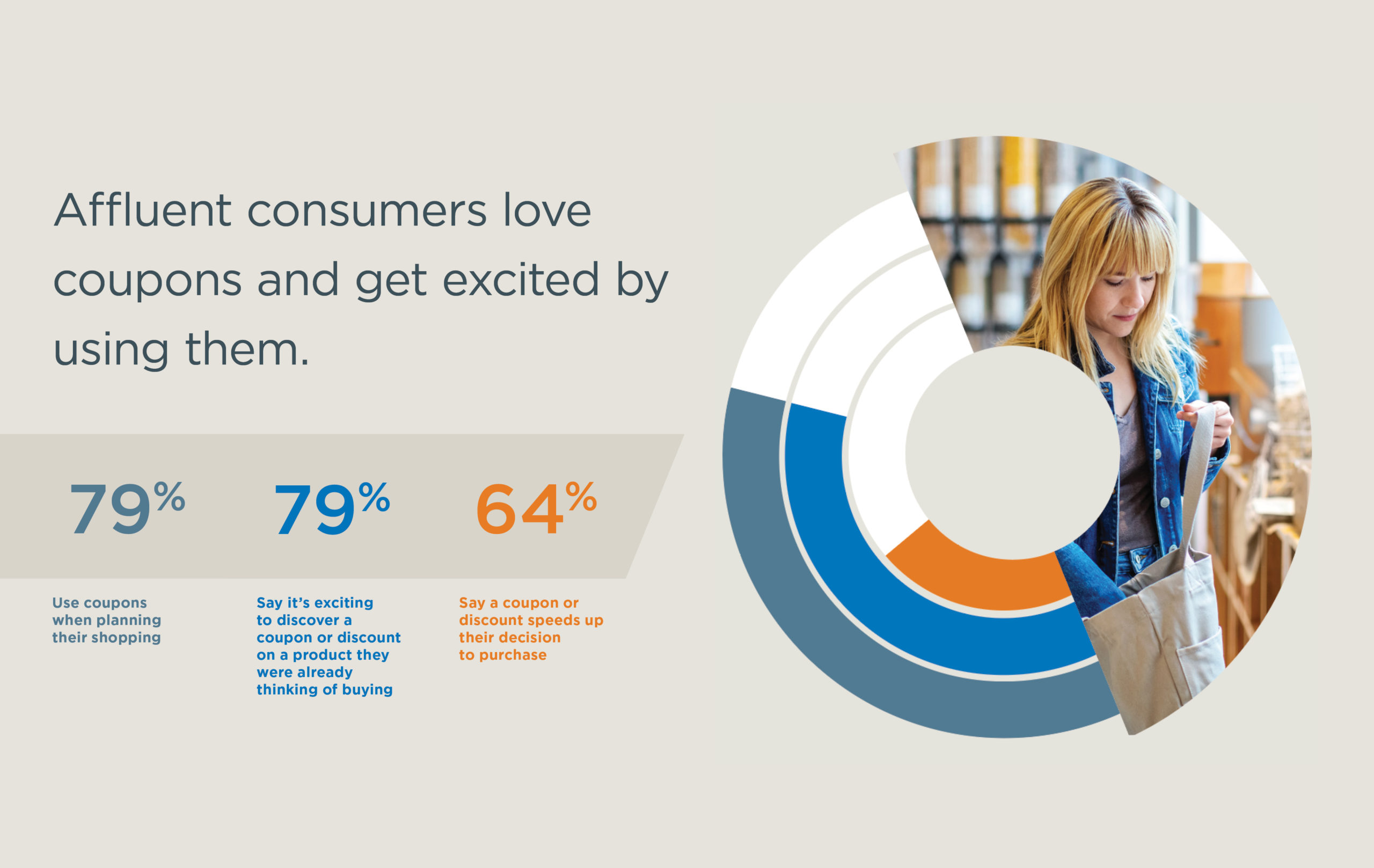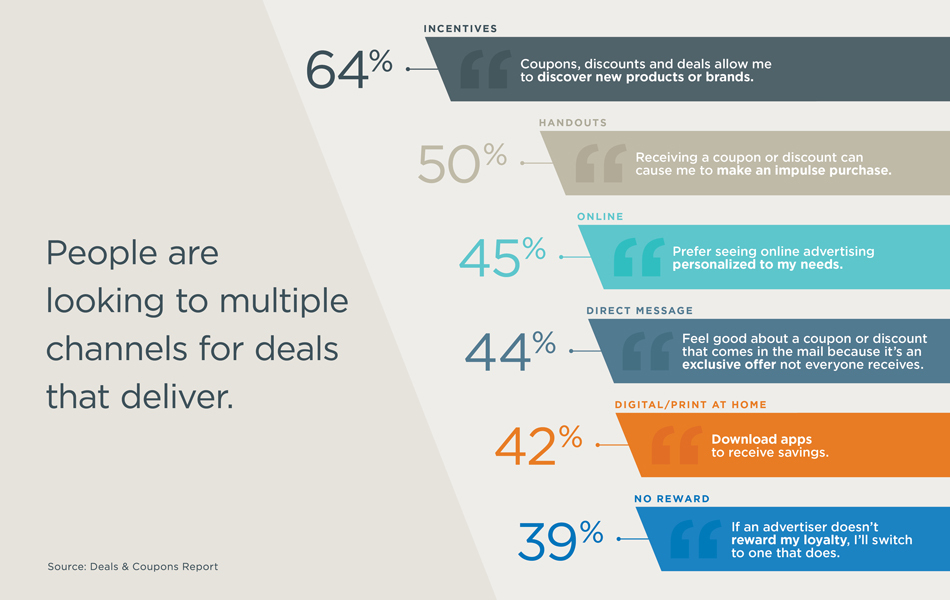Summary
• People remain sensitive to deals and deal messaging as they were pre-COVID.
• Even more, saving behaviors adopted due to the economic challenges experienced during the pandemic are continuing.
• Here, we share how you can harness the power of a deal in your brand messaging to attract your ideal consumer and drive sales.
After a year like 2020, it’s no wonder consumer attitudes and behaviors are expected to change significantly. The economic impact alone is having a long-term effect on spending habits. Our 2021 Consumer Intel Report “A Cautious Return to a New World” notes that 70% of people whose income was affected in 2020 expect their spending power to continue to be impacted in 2021.
People are hungry for coupons, discounts and deals.
In our new consumer insight — 2021 Deals & Coupons Report titled, “Here’s the Deal: Why Your Promotional Strategy Is Key to Reconnecting with Buyers,” we found:
- 60% of shoppers are looking for more coupons, discounts and deals to offset higher prices
- 57% of people say that deal have a significant influence on their purchase decisions
- 31% of consumers tell us they are using more discounts than they did last year
This search for deals is a virtually universal phenomenon that every brand and retailer must consider.
And it is a trend that will remain as the number of consumers seeking ways to save more money has risen by 5 percentage points from 33% in 2020 to 38% in 2021, according to our 2021 Consumer Intel Study.
 Source: 2021 Consumer Intel Report
Source: 2021 Consumer Intel Report
It feels good to save
Even when the economy fully recovers and the demand for frugality begins to subside, there will continue to be a market for deals. In part, it’s because there’s real, tangible joy that comes from getting a great deal. Our 2021 Deals & Coupons Report also found:
- 40% of shoppers say they feel more positive toward stores and brands that give them coupons and 38% feel a real excitement from landing a deal
- 40% of buyer say that using discounts make them more satisfied with their purchases
- 39% of shoppers say that having coupons available make them more likely to be a repeat buyer, with 30% saying they are more loyal to those stores that offer deals
 Source: 2021 Consumer Intel Report
Source: 2021 Consumer Intel Report
Loyalty is up for grabs, and the best deal wins.
The power of deals and savings
People remain sensitive to deals and deal messaging as they were pre-COVID. According to our 2021 Consumer Intel Report, 52% say that a sale will lead them to make an impulse or unplanned purchase. Meanwhile, 37% of shoppers indicate that messages offering coupons or discounts will increase the likelihood that they’d buy from a specific brand.
While deals and affordability play an important role in consumers’ purchasing decisions, they aren’t enough on their own. Messaging and promotions must be nuanced to balance the latest consumer sentiment (e.g., a brand’s social and environmental responsibility) with their financial needs.
For instance, 51% of consumers say that a relevant and engaging brand message can entice them to try a new product — a 5 percentage point increase from 2019. What you offer, where you place the deals and how you serve your customers all matter.
Ads and coupons attract affluent consumers
 Source: 2021 Consumer Intel Report
Source: 2021 Consumer Intel Report
Seventy-four percent of consumers overall indicate that they can be swayed by ads that promote sales and incentives when deciding what to buy and where to shop. Deals can determine what goes onto a shopper’s “must-buy” list. This means brands can leverage promotion opportunities to influence consumer decisions during the planning stage.
The rise in price consciousness isn’t just among shoppers who are negatively impacted by the pandemic. Affluent consumers (those with a household income over $100K) also demonstrate preferences toward deals and incentives. Seventy-nine percent of these shoppers use coupons when planning their shopping, 79% are excited to discover a deal on a product they’re already thinking of buying and 64% say a coupon or discount speeds up their decision to purchase.
Meanwhile, 71% of consumers rank saving the most money by “using coupons and discounts” as the second most important thing when buying groceries.
Offering discounts isn’t about giving a handout. Hunting for deals adds an important dimension to the shopping experience that consumers want. As such, don’t overlook the importance of appealing to this segment in your marketing message.
An omnichannel approach to promoting deals
Fifty-one percent of shoppers prefer to receive their coupons on their smartphones. The number rises to 73% for millennials, 76% for parents and 81% for millennial parents. Sixty-one percent of consumers use a savings app from a grocery store, drugstore, mass merchant or supercenter once a month or more. The figure rises to 80% for millennials, 86% for parents and 90% for millennial parents. But many shoppers also use paper coupons from print sources (e.g., direct mail, newspaper) to maximize savings.
Many consumers use both digital and paper coupons to help them save more. Meanwhile, people — especially millennials, parents, and millennial parents — expect companies to engage them via online and mobile technologies.
Most shoppers rank saving money as their top priority, alongside convenience. Their decisions to activate coupons are less driven by media but more by value and ease of use. They want to save with both digital and paper coupons and therefore, brands must make them available to drive more sales.
As such, marketers must adopt an omnichannel approach to meet diverse customer preferences while dialing up specific channels based on the behaviors of their target audiences.
The search for deals and savings isn’t limited to retail and shopping. Forty-five percent of consumers use coupons, discounts or offers at least half the time when ordering from restaurants. This is particularly prevalent among millennials (61%), parents and millennial parents (67%).
While some consumers are still reluctant to dine at restaurants, 63% say they are comfortable with ordering carryout or delivery. Coupled with the sentiment to support local businesses — 65% of people say it’s important to support local restaurants — there are many opportunities for restaurants to attract diners by offering discounts and incentives through various channels.
In particular, restaurant booking apps speak to consumers’ desire to engage with brands via smartphones. Promoting discounts and deals on these channels is a strategy that restaurants should lean into in 2021 and beyond.
Leveraging deals and savings is critical for restaurants as they recover from the economic downturn. They must adjust and promote their services and offerings to meet consumer expectations. For example, since more parents (61%) and millennial parents (60%) are comfortable with outdoor restaurant dining, marketers should use local ads to target these demographics.

Get the full scoop on driving sales with deals and incentives
The data and insights in this article came from studies conducted by Vericast to examine how consumers are cautiously returning to the new world and to offer practical steps for marketers to harness this cautious optimism.
Matthew Tilley is senior director of content marketing for Vericast and leads content marketing for the company. He has more than 20 years of experience in digital advertising and consumer promotions to develop, communicate, and distribute ideas to make modern marketers more effective.



